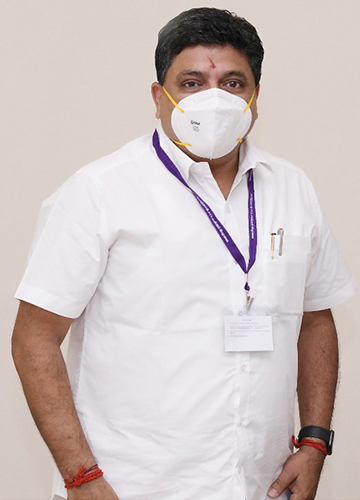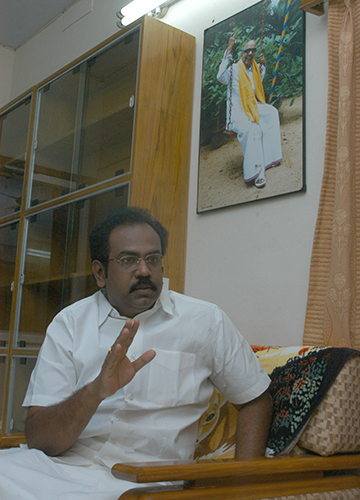FEDERALISM IS something Tamil Nadu holds close to its heart. Chief Minister M.K. Stalin made it loud and clear when his government officially started using ‘ondriya arasu’ (Union government) instead of ‘mathiya arasu’ (Central government). It was lauded by some and criticised by others. Stalin said his government was within its rights to make the change. “Our usage is legal and perfectly in accordance with the letter and spirit of the Indian Constitution,” he said, during the discussion on the motion of thanks to the governor’s address in the assembly on June 24.
When he met a delegation of journalists a day later, Stalin seemed ready to go beyond symbolism, as he explained his idea of governance. “Social justice, state rights and people welfare are my priorities,” he said. He soon constituted an economic advisory council (EAC) with economists Raghuram Rajan, Ester Duflo, Jean Drèze, Arvind Subramanian and S. Narayan. In the first meeting of the EAC, he stated his objectives clearly. “Employment opportunities should increase in Tamil Nadu. Per capita income should go up and the social status of people should improve. The economic growth of the state should be inclusive,” he told the members.
Though Stalin assured them that Tamil Nadu was ready for a drastic change to realise these goals, it might not be an easy task considering the state’s finances. Its fiscal deficit for the year 2020-21 was Rs92,305 crore. The state’s own tax revenue (SOTR), which usually accounts for 70 per cent of its total revenue, was flat at Rs1,01,140 crore. The goods and services tax collection declined by 1.12 per cent to Rs37,942 crore. Its share of central taxes, too, declined by 5.56 per cent to Rs24,924 crore. On the other hand, the revenue expenditure increased by 13.3 per cent to Rs2,30,332 crore. As per the interim budget presented in the assembly by the then finance minister O. Panneerselvam in February 2021, the debt burden of the state was expected to be Rs5.7 lakh crore by March 31.
“Tamil Nadu is definitely a welfare state,” said Professor Ramu Manivannan, head of the department of politics and public administration at the University of Madras. “The new government has begun well. But to keep the momentum going, the state’s revenues will have to go up. You can’t go on with this revenue deficit budgeting.”
Stalin has asked the EAC to guide the state to prosperity using its own revenue, as he pointed out that the Union government had “snatched the rights of states over levying tax by introducing the GST.” In fact, his finance minister, P.T.R. Palanivel Thiagarajan, raised some objections in the 43rd GST Council meeting. Thiagarajan said the GST system was designed badly and his state was against the one state one vote policy.
Stalin has also revamped the Tamil Nadu Development Policy Council, which functions as the state planning commission, with economist Professor J. Jeyaranjan as vice chairperson and Professor R. Srinivasan of the University of Madras as a full-time member.
Stalin, by all means, has set lofty goals for his government. And he has made sure that everyone is on board. His ministers have been pressed to go the extra mile. The industries department, for instance, was on its toes when the second wave of the Covid-19 pandemic peaked in the state in May and June. Minister R. Thangam Thennarasu and secretary N.Muruganandam worked tirelessly to ensure that production and supply of medical oxygen met the spike in the requirement. The department has also started working on building biotechnology industries in the state.
Immediately after he took charge on May 7, Stalin installed a new set of key officials—chief secretary V. Irai Anbu, principal secretary T. Udhayachandran and secretaries P. Umanath, M.S. Shanmugam and Anu George. Also, Shilpa Prabhakar has been given charge of the new department ‘CM in your constituency’, which has been working on resolving public grievances within the first 100 days of the government. Stalin had promised this during his campaign for the assembly election. Some 70,000 petitions were heard and resolved in the first 45 days.
One of Stalin’s biggest challenges is dealing with bureaucrats who are AIADMK sympathisers. They make a significant chunk of the state’s government machinery, thanks to the decade-long AIADMK rule. Though Stalin’s long administrative experience might come in handy in dealing with them, he has already got a taste of what they are capable of. Officials recently found that data of several crucial departments like local administration, highways, public works, public health and revenue had been deleted from computers. Government receipts issued for purchases in these departments have been destroyed. “The hard disks have been formatted without backups,” said a senior official at the state secretariat. An internal circular has been sent to the officers in these departments to restore data between 2017-2020 from the files.
Despite such hiccups, Stalin has been able to make an impression that he means business. It remains to be seen if he will be able to keep the momentum.




